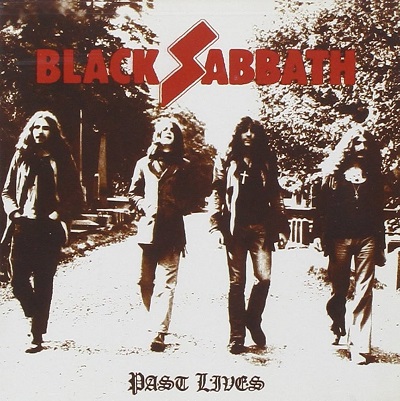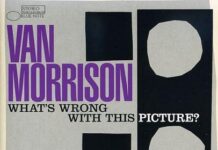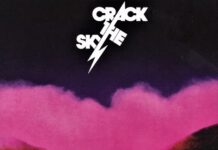In 1970, Black Sabbath was the darkest, most ominous band to ever crawl out of the slums of England. Instead of embracing the flower power and groovy set of the day, they went the ghoulish route — passing on the torch to generations of hard rock and heavy metal groups. Guitarist Tony Iommi’s clean, yet heavily distorted tone cut through the heart like a hot-buttered dagger amidst the rumbling buzz saw banshee of bassist Geezer Butler and drummer Bill Ward. On stage, Ozzy Osbourne was more like a cheerleader than the catatonic househusband of today — wildly clapping and flashing peace signs from the side of the stage as Iommi stood almost motionless, ripping through one fiery lead after another.
Together, the original Sabs recorded eight albums, toured regularly, and never released a proper “live” album during their tenure. In 1980, Live At Last, a hastily packaged hodge-podge of a live album came and dropped like an under nourished import. Over 20 years later, Past Lives, a definitive double “live” album featuring the classic Sabbath of the 70s, surfaced. Drop the needle and let this set erase any doubts of Sabbath’s mighty legacy.
Curiously, the first disc of Past Lives is actually a remastered version of Live At Last with a few extras tossed in for good measure. Taken from 1973 performances in Manchester and London, the band plies through startling cracks at “Tomorrow’s Dream,” “Sweet Leaf,” and an unintelligible “Killing Yourself To Live” before bringing the crowd to their knees for “Snowblind,” “Children Of The Grave,” and “War Pigs.” The impromptu 19-minute “Wicked World” jam is a palatable departure that encapsulates the band’s blues and jazz-fueled tendencies before the jets are fired for the traditional finale of “Paranoid,” a song Ozzy Osbourne likely sang every day for the rest of his life.
The second disc mixes some of the more obscure songs from the Sabbath catalog with favorites like “Iron Man.” From the first album, “Hand Of Doom,” “Behind The Wall Of Sleep,” and the truly diabolical “Black Sabbath” are sumptuous samplings of raw energy. And to hear tracks from 1975’s Sabotage like “Hole In The Sky,” “Symptom Of The Universe,” and “Megalomania” from the infamous Asbury Park show simply prove that Sabbath, with six albums under their belt at that point in time, was consistently surging with fire and brimstone.
The set’s booklet features four pages of the band arriving and playing at the California Jam. Unfortunately, not a shred of that performance made it to either disc. That day’s performance of “Sabbra Cadabra” and “Supernaut” would have certainly given Past Lives a more rounded overview. Fortunately, you can hear those songs on the complete 1975 Asbury Park show included in the Sabotage Super Deluxe set from 2021. Still, Past Lives resonates like a long, lost relative, and easily stands as a definitive document of vintage Black Sabbath in concert.
In the 70s, Sabbath was a band at odds with the mainstream, dismissed by the critics and feared by the establishment. At the dawn of the 21st century, Osbourne’s success as a solo artist and hackneyed celebrity brought immense attention to the band. Dishing out the praise to Sabbath is like paying tribute to a mafia don. With 2025’s Back To The Beginning concert, Black Sabbath retired with dignity and grace, just as Ozzy Osbourne had hoped for. In years to come, there will undoubtedly be more “live” nuggets for diehards and archaeologists to feast on. Indeed, the music Ozzy Osbourne and Black Sabbath lives on as we fondly remember and relish the past lives of the singer and the band — renown native sons of Birmingham, England.
~ Shawn Perry




















